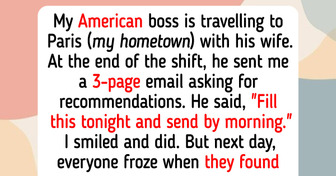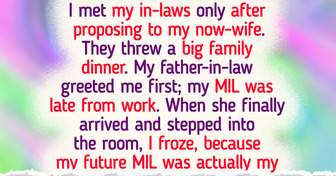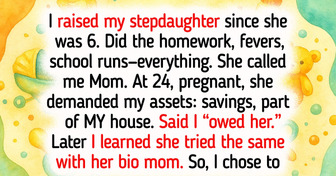“He Got Himself a Younger Lisa,” Jason Momoa’s New Girlfriend Bears a Striking Resemblance to His Ex-Wife


In today’s job market, getting noticed takes more than a great resume and practiced answers. Many employers are using unique interview methods to look beyond the usual qualifications. These techniques can highlight your problem-solving, adaptability, and emotional intelligence. This article will help you learn tricks used my employers and get your dream job.
The silent treatment interview technique is designed to assess a candidate’s emotional control, confidence, and self-reliance during moments of discomfort or uncertainty. By remaining silent after a question is asked, the interviewer is observing how the candidate responds to awkward pauses, how they manage the pressure of filling the silence, and how well they can take charge of the conversation.
This type of interview tests whether the candidate can maintain composure, adapt quickly, and continue speaking confidently despite the discomfort of silence. It's a subtle yet effective way to gauge emotional intelligence and mental resilience.
Stay calm and composed, and don’t rush to fill the silence. If you’re unsure about the question, ask for clarification. Then, answer in a structured manner with clear examples, as this shows your ability to think under pressure. © Jessica Werlinger / LinkedIn

The lunch or coffee interview is used to assess a candidate's ability to interact in informal settings while maintaining professionalism. This type of interview allows the interviewer to evaluate social and communication skills in a relaxed setting, providing insight into the candidate's manners, conversational style, and ability to build rapport with others.
It’s a method used to see how candidates might represent the company in public-facing roles, how they navigate small talk, and whether they can comfortably switch between formal and informal interactions. The relaxed environment also gives a glimpse of how candidates handle distractions and how well they maintain focus outside the usual corporate setting.
Maintain a balance between professionalism and approachability. Be mindful of your table manners, engage in natural conversation, and keep the discussion positive. Remember, the focus is not just on the job qualifications, but on how you interact in a social context. © Kate C Farrar / The Muse

The surprise group exercise is designed to assess how well a candidate can work as part of a team, lead when necessary, and solve problems collaboratively under pressure. It simulates a workplace environment where team dynamics, leadership abilities, and collaboration are critical. The exercise not only evaluates how a candidate contributes to the team but also tests their ability to manage differing personalities, build consensus, and communicate effectively in group settings.
This type of interview helps employers gauge a candidate’s ability to lead, follow, or work harmoniously within a team, all while under time constraints or pressure. The interviewer may ask you to collaborate with other candidates on a challenge or project, often with a tight deadline.
Focus on contributing actively to the group while listening to others. Show leadership when needed, but also demonstrate your ability to work cooperatively. Be open to others' ideas and communicate effectively to help the group meet its objectives. © Indeed Editorial Team / Indeed
The role reversal interview is intended to test a candidate’s understanding of the company, the role, and their ability to think critically about both. By having the candidate play the role of the interviewer, this technique evaluates the candidate’s judgment, curiosity, and insight into the position they’re applying for.
The purpose is to see if the candidate can ask thoughtful, probing questions that demonstrate a deep understanding of the organization and the job. Additionally, it helps interviewers assess how candidates handle the responsibility of leading a conversation and whether they can make informed decisions based on their knowledge of the role. In a role reversal interview, the candidate is asked to ‘interview’ the hiring manager as if they were making the hiring decision.
Prepare insightful questions about the company, role, and team dynamics. This exercise gives you the chance to demonstrate your understanding of the company’s culture and the position’s requirements. Show that you can think on your feet and are confident enough to lead the conversation. © Beth Winston / Chron
The curveball question challenge is used to assess a candidate's creativity, problem-solving abilities, and their capacity to think quickly under unpredictable conditions. By asking unusual or thought-provoking questions, interviewers aim to evaluate how well candidates can adapt, how they handle the unknown, and whether they can stay calm while formulating a response.
These questions often don’t have a right or wrong answer, but the interviewer is more interested in the candidate’s thought process, decision-making skills, and creativity. The ability to approach an unexpected situation logically, without panicking, is a valuable trait for many roles. Candidates may be asked unconventional questions like, “If you were an animal, which one would you be and why?” or “How many basketballs can fit inside a bus?”
Keep calm and don’t overthink the question. Offer a logical or humorous answer, and try to connect it back to the role you're applying for. The key is to show that you can think creatively and stay composed when faced with unexpected situations. © Indeed Editorial Team / Indeed

The pen drop test is designed to assess a candidate’s instinctive empathy and willingness to help others. When the interviewer drops a pen, the candidate’s reaction can reveal their attentiveness and willingness to assist without being asked. This technique tests whether candidates show kindness or awareness in real-time situations, providing valuable insight into their character and interpersonal skills.
The interviewer deliberately drops a pen during the interview to observe the candidate’s response.
If this happens, simply pick up the pen without hesitation. Your natural, helpful instinct can show your empathy and attentiveness. © Hagi Trinh / Recruitee
The day on the job test allows employers to assess a candidate’s skills, adaptability, and cultural fit by having them perform actual tasks in a real work environment. Unlike traditional interviews, this method provides a hands-on evaluation of how well the candidate can handle job responsibilities and interact with the team.
A marketing candidate may be asked to create a sample social media post, while a developer might complete a small coding task.
Treat this as an opportunity to showcase your skills. Ask questions to clarify expectations, demonstrate initiative, and engage with team members to show your adaptability. © Hagi Trinh / Recruitee
Employers use a variety of tricks and tests to assess candidates, one of which is the "Food Choice" trick. This tactic provides insight into a candidate’s personality and decision-making style. Learn more about how it works here.











